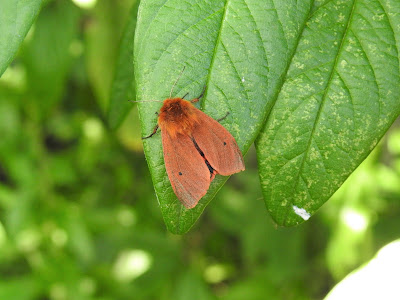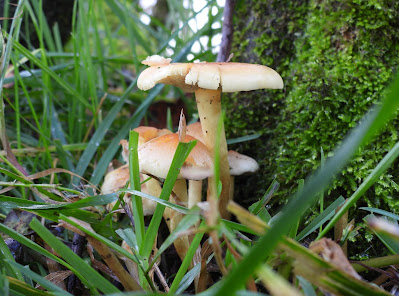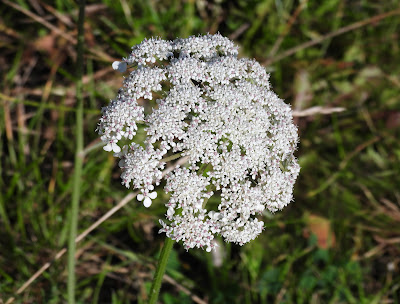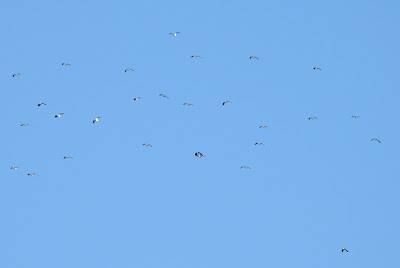It's that time of year again, when the shortest day is upon us, and we can celebrate the return of the sun. I would like to take this opportunity to wish you all Solstice Greetings, and here's hoping that the new year will be peaceful, and full of lots of natural history.
I haven't got a great deal to report I'm afraid since my last post, mainly because of the usual; weather and availability. I think I've said it before, but there has been a distinct lack of the availability and weather Gods aligning of late!
We had a walk from the Quay and along the Wyre Estuary one afternoon towards the end of November, but it was fairly quiet. There were few waders feeding on the mudflats, just 18 Redshanks, nine Oystercatchers, and three Curlews.
The most interesting thing that we encountered was a Carrion Crow attempting to open muscle shells on the old ferry terminal. It was holding the muscle with its feet, and attempting to lever the bivalve open, without success during the time we watched it. The old ferry terminal is littered with thousands of broken muscle shells, opened mainly by Gulls dropping them on to the hard surface.
Carrion Crow attempting to open a muscle (above & below)
We came across these seed heads from some Hawkbit sp., that we thought
looked like mini pompoms!
I had a site meeting just under a month ago at my client's farm in Bowland, to look at possible locations for a few new wader scrapes. All the time we were there, a Barn Owl was out hunting late morning close to the old field barn. John said that most days of late, he had seen 1 or 2 Barn Owls hunting throughout the day. It's never a good sign when Barn Owls are hunting throughout the day, and I suspect they are struggling to find food because of it being a poor vole year. Sometimes it can be weather related, particularly if there have been a series of wet nights preventing them from hunting, but when it is day after day, it is more than that.
Gail and I stopped in a gateway on one of the farm tracks to put our boots on, close to a wide ditch and some pools, and we flushed a Green Sandpiper, so that was nice. Other birds on a non full-on birding morning included, a male Stonechat, Kestrel, and Raven.
We have been keeping the feeding station going on our good friend's farm near Nateby, but unfortunately haven't had the opportunity for a ringing session as yet. At the moment, the birds are emptying two large seed feeders holding 17 kg of seed in each, and two six port tube feeders in about four days!
Earlier in the month, I had a walk along the Biological Heritage Site, Larkholme Grasslands, along the back of the golf course to Rossall Point, and back to my car. It was quiet! I tried to photograph a Meadow Pipit that was foraging in some rank grassland, with mixed results. Shortly after that, I had a family party of four exuberant Ravens fly over heading east, that were full of high spirits, carrying out all sorts of aerobatics, and genuinely just seemed to be having fun playing together.
I walked back along the shore, but there weren't many waders roosting, just 27 Oystercatchers, 14 Turnstones, 22 Ringed Plovers, eleven Sanderlings and a Dunlin. A couple of scans of the sea with my bins produced a nice flock of 53 Eiders, a Great Crested Grebe, ten Common Scoters, and a Red-throated Diver.
I heard a familiar call as I was walking along the shore, but a call that I don't hear too often, and it was the call of one of my favourite Gulls, the Common Gull. A single bird dropped on to the beach, and flew off after a short while when the tide pushed it off. You can't beat a Common Gull call! Perhaps a Mediterranean Gull call maybe!
Common Gull
A few days ago, I decided to spend an hour or so watching the garden feeders, using my shed as a hide. So, I sat in the shed with the door propped open, small table in front of me, with my bins, notebook, camera, and coffee on it. The usual suspects came to the feeders, including Blue and Great Tits, Robin, Dunnock, Goldfinches, House Sparrows, and Blackbirds on the Apples. Recently, we have been getting a group of at least four Greenfinches feeding on the sunflower hearts, but as the shed is close to their favoured feeder (furthest from the house), sadly they kept away.
I caught a movement out of the corner of my eye, and looked up to see a male Sparrowhawk in the Apple tree. Through my bins I could see that he was a second winter bird, with some brown retained secondaries and lesser coverts. Unfortunately, the sky was bright behind him, but I did manage to get some half-decent shots, for me anyway, and you can see some of them below. After a while he dropped down to the trunk of a lower Willow, but I only managed to get one picture of him there. And then he was off. A privilege to spend some time in his company!
I'm busy indoors at the moment, trying to get all my records updated and on to BirdTrack and iRecord, so maybe it's not too bad that the forecast isn't great over the next few days. Then we've got that pesky celebration in the middle of next week, and after that, things can return to normal. I can't wait.
Over on the right you will see that I have updated the ringing totals for Fylde Ringing Group up until the end of November. Four new species were ringed for the year during the month and these were Treecreeper, Fieldfare, Lesser Redpoll, and Bullfinch. Only one species made it into double figures, and again this was Redwing, with 56 ringed. below you will find the top 10 'movers and shakers' for the year.
Top 10 Movers and Shakers for the Year
1. Siskin - 112 (same position)
2. Meadow Pipit - 94 (same position)
3. Blue Tit - 92 (same position)
4. Redwing - 81 (up from 9th)
5. Goldfinch - 48 (down from 4th)
6. Great Tit - 44 (same position)
Reed Warbler - 44 (down from 5th)
8. Chaffinch - 35 9down from 7th)
9. Tree Sparrow - 34 (down from 8th)
10. Greenfinch - 27 (same position)
























































